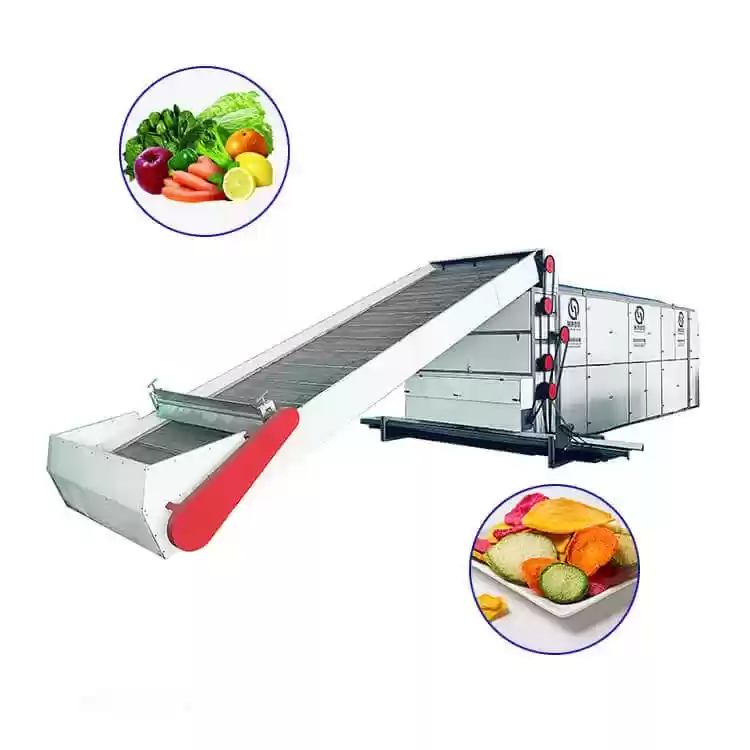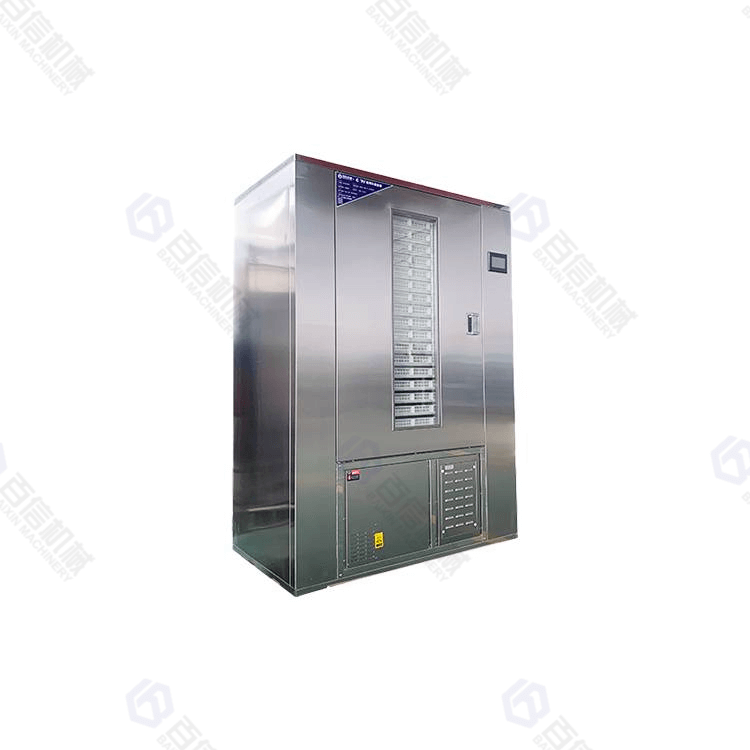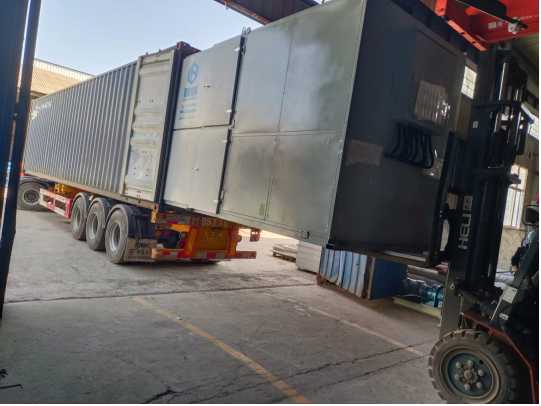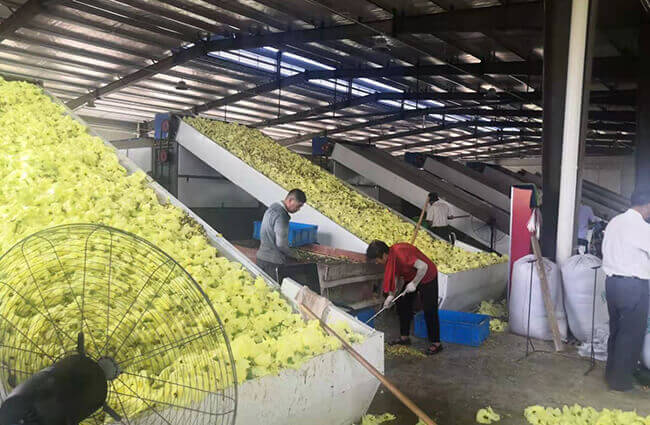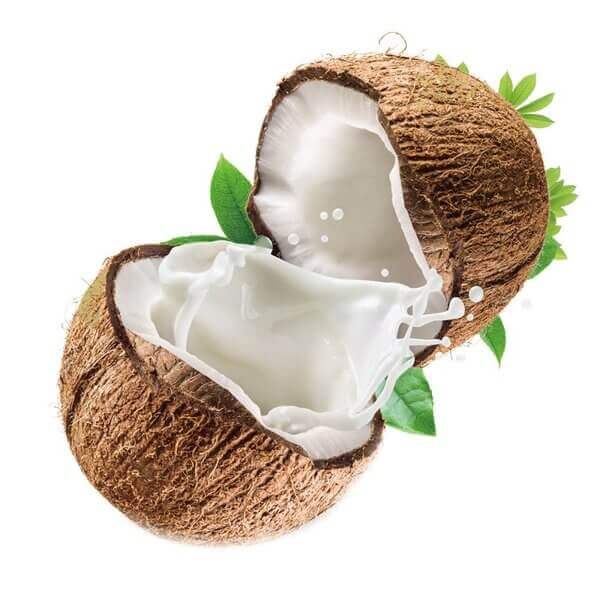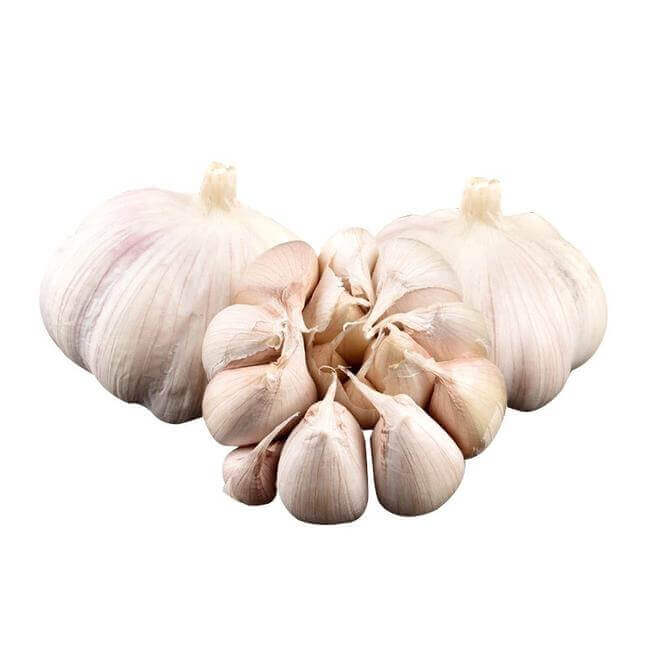How To Dry Passion Fruit/Dehydrate Passion Fruit in a Dehydrator
Passion fruit is native to the Antilles and is widely planted in tropical and subtropical regions. There are mainly two categories of purple fruit and yellow fruit. The plant life span is about 20 years, and the economic life span is generally 8 to 10 years.
Passion fruit can be eaten raw or used as a vegetable or feed. The medicine has the effect of excitement and strength. The fruit pulp is juicy, adding bicarbonate and sugar, can be made into fragrant and delicious beverages, and can also be used to add to other beverages to improve the quality of beverages. Passion fruit seeds are squeezed for oil, which can be used for edible and soap making and paint making.

Passion fruit processing steps:
1. Raw material collection
Collect fresh, no pests, no spoilage, 60% to 80% mature passion fruit as raw materials.
2. Raw material cleaning
The raw fruit is placed in a pneumatic cleaning tank for cleaning to remove the sand and other foreign matter adhering to the peel.
3. Raw material processing
To cut the raw fruit and dig its flesh, the process is to use a knife to cut the passion fruit vertically, cut the fruit in half, then use a spoon to dig out the fruit pulp, put it in a food-grade plastic bucket, and place it at 15°C. Keep in the cold storage.
4. Cook
In a jacketed pot, use 90℃-100℃ hot water to cook the passion fruit peel until it is easy to separate the stratum corneum from the peel and not rotten.
5. Exfoliating the cuticle
Use a spoon 1/4 the size of passion fruit to separate the cuticle from the peel
6. Enzymatic hydrolysis
Put 40ppm of pectinase into 40 kg of water to make an enzymatic hydrolysate, then mix the enzymatic hydrolysate with 80 kg of passion fruit peel and stir evenly to start enzymatic hydrolysis of the exfoliated layer of passion fruit peel. Enzyme at room temperature After 30 minutes of hydrolysis, filter after enzymatic hydrolysis and filter the water.
7. Color protection
Use a sodium metabisulfite solution with a concentration of 7‰ to soak the enzymatically hydrolyzed passion fruit peel, soak for 10 minutes, and then drain the soaking liquid.
8. Candied
Using the segmented sugaring method, the ratio of white granulated sugar to maltose is 5:1 for one stage of sugaring, and the sugar liquid with a sugar content of 40°Bix is used for sugaring, and the time is 24 hours; for the second stage of sugaring, white sugar and maltose are used. The ratio is 5:1, the sugar solution with the sugar content of 60°Bix is sugared, and 0.5% of the total weight of citric acid is added for 24 hours.
9. Pulp treatment
Thaw the fruit syrup, and then use white sugar, citric acid or sodium citrate and fruit syrup to make a mixed fruit syrup. The specific raw material ratio is: summer passion fruit syrup 50%, citric acid 0.1%, white sugar 49.9 %, winter passion fruit pulp 40%, sodium citrate 1%. White granulated sugar 59%; Then, using the wrapping ability of the passion fruit peel after cutting, embed the prepared fruit syrup in the already candied passion fruit peel, so that all the contents of the passion fruit are kept intact, and finally placed in order to bake On the sieve and placed in the heat pump drying room for drying.

Passion fruit drying process:
The drying process of passion fruit is carried out by the segmented drying method. The first drying process is to keep the drying temperature at 60℃—65℃ for 6 hours, then leave it at room temperature for 12-14 hours, and then put the other side of the passion fruit Turn it over for more uniform drying. The second drying process is to keep the drying temperature at 50 ℃-55 ℃ for 10 hours.
The product from the drying room is placed in a temperature environment of 20℃-25℃ for cooling for 12-14 hours, so that the moisture of the product is fully balanced and the taste of the product is softer. Sprinkle the cooled product with a thin layer of powdered sugar to keep the product dry, and then divide it into packaging bags to obtain the finished product.
Recommendation of passion fruit dryer/passion fruit drying machine
Passion fruit heat pump drying machine use the principle of inverse Carnot cycle. It absorbs low-temperature heat energy in the air, which becomes high-temperature heat energy after efficient heat collection and integration by the heat pump system, and is transported to the drying room for cyclic heating and drying of materials.It refers to exhausting the hot and humid air in the drying room directly to the outside of the drying room through dehumidification device, and then replenishing natural fresh air.
Hot air circle drying machine belongs to high temperature heat pump unit. Its working principle is: the working fluid of the heat pump is compressed by the compressor, becomes high temperature and high pressure gas, enters the condenser, condenses and liquefies the heat, and is used for air heating in the drying room. The moisture in the material is vaporized and evaporated by the form of hot air, and the evaporated water vapor is discharged by the moisture discharge system, thereby achieving the purpose of drying the drying material.


Passion fruit drying video:


Passion fruit can be eaten raw or used as a vegetable or feed. The medicine has the effect of excitement and strength. The fruit pulp is juicy, adding bicarbonate and sugar, can be made into fragrant and delicious beverages, and can also be used to add to other beverages to improve the quality of beverages. Passion fruit seeds are squeezed for oil, which can be used for edible and soap making and paint making.
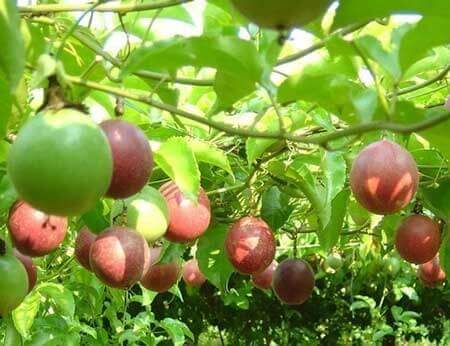
Passion fruit processing steps:
1. Raw material collection
Collect fresh, no pests, no spoilage, 60% to 80% mature passion fruit as raw materials.
2. Raw material cleaning
The raw fruit is placed in a pneumatic cleaning tank for cleaning to remove the sand and other foreign matter adhering to the peel.
3. Raw material processing
To cut the raw fruit and dig its flesh, the process is to use a knife to cut the passion fruit vertically, cut the fruit in half, then use a spoon to dig out the fruit pulp, put it in a food-grade plastic bucket, and place it at 15°C. Keep in the cold storage.
4. Cook
In a jacketed pot, use 90℃-100℃ hot water to cook the passion fruit peel until it is easy to separate the stratum corneum from the peel and not rotten.
5. Exfoliating the cuticle
Use a spoon 1/4 the size of passion fruit to separate the cuticle from the peel
6. Enzymatic hydrolysis
Put 40ppm of pectinase into 40 kg of water to make an enzymatic hydrolysate, then mix the enzymatic hydrolysate with 80 kg of passion fruit peel and stir evenly to start enzymatic hydrolysis of the exfoliated layer of passion fruit peel. Enzyme at room temperature After 30 minutes of hydrolysis, filter after enzymatic hydrolysis and filter the water.
7. Color protection
Use a sodium metabisulfite solution with a concentration of 7‰ to soak the enzymatically hydrolyzed passion fruit peel, soak for 10 minutes, and then drain the soaking liquid.
8. Candied
Using the segmented sugaring method, the ratio of white granulated sugar to maltose is 5:1 for one stage of sugaring, and the sugar liquid with a sugar content of 40°Bix is used for sugaring, and the time is 24 hours; for the second stage of sugaring, white sugar and maltose are used. The ratio is 5:1, the sugar solution with the sugar content of 60°Bix is sugared, and 0.5% of the total weight of citric acid is added for 24 hours.
9. Pulp treatment
Thaw the fruit syrup, and then use white sugar, citric acid or sodium citrate and fruit syrup to make a mixed fruit syrup. The specific raw material ratio is: summer passion fruit syrup 50%, citric acid 0.1%, white sugar 49.9 %, winter passion fruit pulp 40%, sodium citrate 1%. White granulated sugar 59%; Then, using the wrapping ability of the passion fruit peel after cutting, embed the prepared fruit syrup in the already candied passion fruit peel, so that all the contents of the passion fruit are kept intact, and finally placed in order to bake On the sieve and placed in the heat pump drying room for drying.
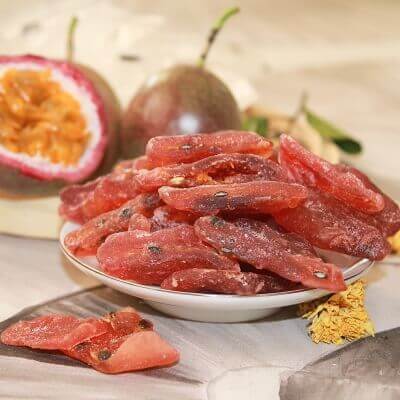
Passion fruit drying process:
The drying process of passion fruit is carried out by the segmented drying method. The first drying process is to keep the drying temperature at 60℃—65℃ for 6 hours, then leave it at room temperature for 12-14 hours, and then put the other side of the passion fruit Turn it over for more uniform drying. The second drying process is to keep the drying temperature at 50 ℃-55 ℃ for 10 hours.
The product from the drying room is placed in a temperature environment of 20℃-25℃ for cooling for 12-14 hours, so that the moisture of the product is fully balanced and the taste of the product is softer. Sprinkle the cooled product with a thin layer of powdered sugar to keep the product dry, and then divide it into packaging bags to obtain the finished product.
Recommendation of passion fruit dryer/passion fruit drying machine
Passion fruit heat pump drying machine use the principle of inverse Carnot cycle. It absorbs low-temperature heat energy in the air, which becomes high-temperature heat energy after efficient heat collection and integration by the heat pump system, and is transported to the drying room for cyclic heating and drying of materials.It refers to exhausting the hot and humid air in the drying room directly to the outside of the drying room through dehumidification device, and then replenishing natural fresh air.
Hot air circle drying machine belongs to high temperature heat pump unit. Its working principle is: the working fluid of the heat pump is compressed by the compressor, becomes high temperature and high pressure gas, enters the condenser, condenses and liquefies the heat, and is used for air heating in the drying room. The moisture in the material is vaporized and evaporated by the form of hot air, and the evaporated water vapor is discharged by the moisture discharge system, thereby achieving the purpose of drying the drying material.


Passion fruit drying video:
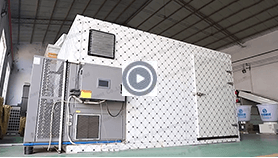

Previous post:
RELATED PRODUCTS
Hot News
-
Hemp Drying Machine Delivery To France
Our French customers have been in the hemp business for many years and have their own plantations. We learned through the Internet that we are engaged in the manufacture of drying equipment and consulted with us on hemp drying. The customer requires that the drying output of hemp is 300kg/h, the heat source uses an air energy heat pump, the heat can be recovered, the installation should be simple, and one container is finished.
-
8 Sets Flowers Dryer Tested Well In Client's Site
This time, we have equipped 8sets flowers dryer of model BX-15m*2.2*4layers. Drying material: flowers Output: 120 tons/day Drying machine: continuous multi-layer mesh belt drying machine Drying time: 1-2 hours
-
Henan Baixin Export 6 Sets Leaf Dryer To American!
In recent days, we have continuously exported 6 dryers to the United States! Customer drying material: leaf material Drying temperature: strict drying temperature and humidity requirements. The drying temperature needs to be kept at about 30-50℃, and the temperature is moderate, which can well retain the effective ingredients, which is conducive to the later material extraction and reprocessing...
RELATED NEWS
-

Coconut Dryer Machine Malayalam
If you want to dry coconuts, you need a professional coconut dryer machine. So what are the coconut dryer machines? How to choose the right dryer machines? Next, I will share with you three types of coconut dryer machines, coconut drying room, mesh belt coconut dryer machine and coconut dryer all-in-one machine. -

Garlic Drying Methods
After drying, the garlic not only retains the original taste and nutrition, but also is more convenient to store and carry. What kind of method can achieve such drying effect? Let's explore this issue together.
There are two ways to dry garlic. One is to do dry garlic at home, and the other is the large quantities of the garlic industry to produce dried garlic. -

Copra Drier
At present, copra drier can be divided into three types according to the output: Continuous Mesh Belt Copra Drier with output of 300-2000kg/h; Heat Pump Copra Drying Room with output of 100-5000kg/batch; and All-in-one Copra Drier with output of 100-1500kg/batch. In addition to different output, these three driers are also different in terms of heat source and working principle. Each has its own advantages, the following is a detailed introduction. -

Copra Dryer Price
Under normal circumstances, copra manufacturers dry the coconut before shipping it out. Today I will share with you the professional copra dryer by Baixin Machinery and the copra dryer price. At present, copra dryer can be divided into three types according to the output: Continuous Mesh Belt Copra Dryer with output of 300-2000kg/h; Heat Pump Copra Drying Room with output of 100-5000kg/batch; and All-in-one Copra Dryer with output of 100-1500kg/batch.

